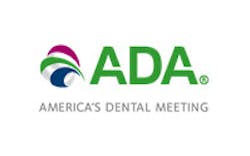On the road at the ADA Annual Session
As I write this, I am in New Orleans. The American Dental Association (ADA) is hosting its 154th Annual Session including the Continuing Education Program, World Marketplace Exhibition and House of Delegates at the New Orleans Ernest N. Morial Convention Center Oct. 31- Nov. 3. The Annual Session is the primary event for dentists and dental professionals who are looking for the highest quality, most innovative and effective continuing education to improve patient care. Laissez Les Bon Temps Roulez!!
After reading my article on ventilator-assisted pneumonia, Cindy Kleiman, RDH, BS, Oral Care Consultant and Speaker, send me two articles I wanted to share with you.
One of the articles, of which Cindy is a co-author, introduced the Bedside Oral Exam (BOE) and the Barrow Oral Care Protocol (BOCP) to assist and guide oral care for intensive care unit patients.(1) The secondary goal was to explore quality improvement data for incidence of ventilator associated pneumonia (VAP), cost effectiveness of oral hygiene supplies, and staff response to change in practice. The method was a descriptive case design for implementation and evaluation of oral assessments and oral hygiene. Incidence of VAP and the cost of oral care supplies before and after implementation were compared. Staff responses were obtained both pre- and post-implementation.
The results were positive, with a decrease in VAP, and a cost saving for oral hygiene supplies was realized. Cost-effective, comprehensive oral care seems to be effective in reducing VAP. The authors noted that more studies are needed to measure impact of oral hygiene on oral health and patient comfort.
An earlier study compared changes in oral health during intubation until 48 hours after extubation in neuroscience intensive care unit (ICU) patients enrolled in a standard or a comprehensive oral care protocol.(2) The effects of manual toothbrushing were compared with those of tongue scraping, electric toothbrushing, and moisturizing in intubated patients in a neuroscience ICU in a 2-year randomized clinical trial.
Oral health was evaluated based on the Oral Assessment Guide (OAG).
The results showed that a comprehensive oral care protocol, using a tongue scraper, an electrical toothbrush, and pharmacological moisturizers, was more effective for oral hygiene throughout intubation and after extubation, than manual toothbrushing alone. Read the article to see the details of the intervention.
References
1. Prendergast V, Kleiman C, King M. The Bedside Oral Exam and the Barrow Oral Care Protocol: Translating evidence-based oral care into practice. Intensive and Critical Care Nursing, Volume 29, Issue 5, Pages 282-290, October 2013. http://www.intensivecriticalcarenursing.com/article/S0964-3397(13)00036-0/fulltext
2. Prendergast V, Jakobsson U, Renver St, and Hallberg IR. Effects of a Standard Versus Comprehensive Oral Care Protocol Among Intubated Neuroscience ICU Patients: Results of a Randomized Controlled Trial. Journal of Neuroscience Nursing, Volume 44, No 3, p. 134-146. June 2012. http://nursing.ceconnection.com/nu/ovidfiles/01376517-201206000-00004.pdf.
Sincerely,


